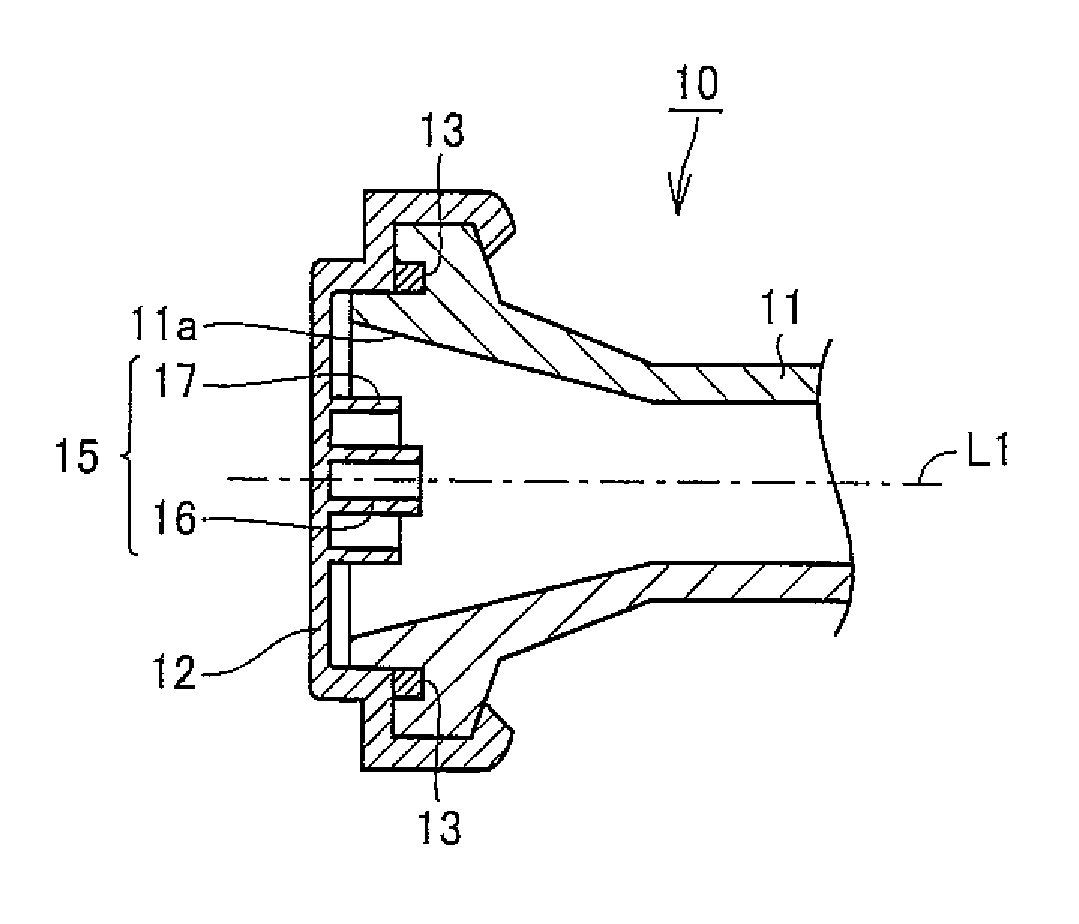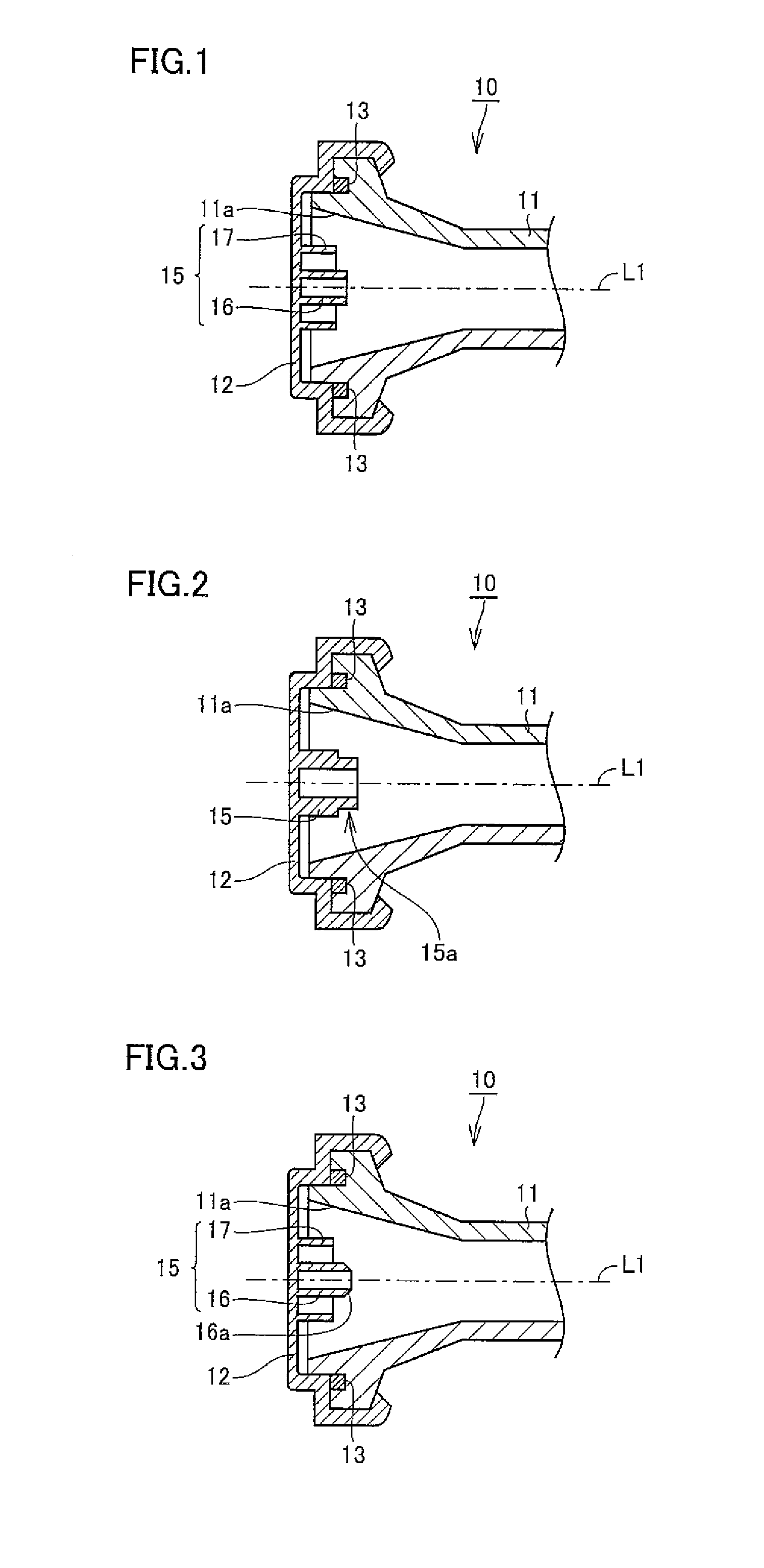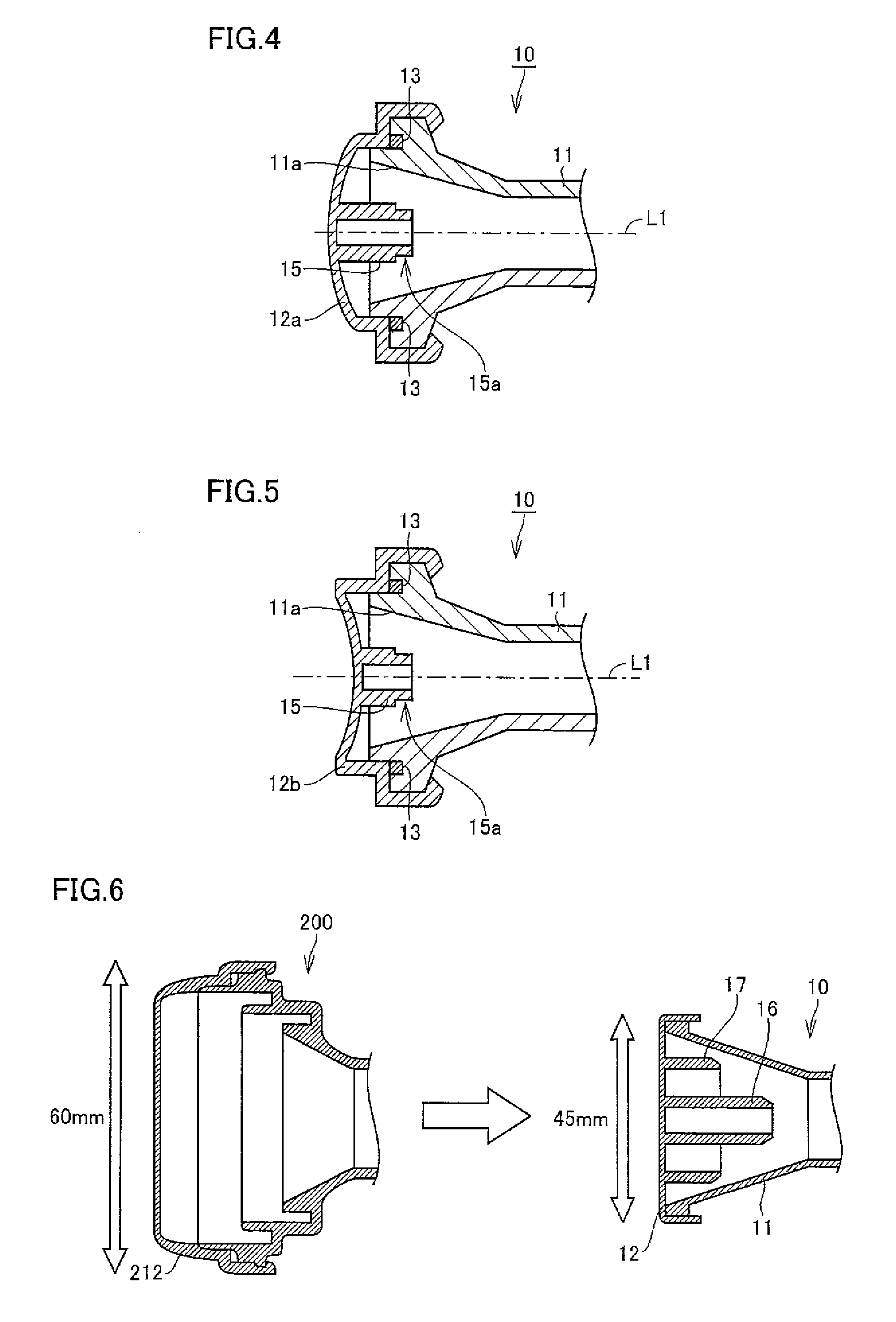Primary radiator for parabolic antenna, low noise block down-converter, and parabolic antenna apparatus
a technology of parabolic antenna and radiator, which is applied in the direction of antennas, waveguide horns, radiating element housings, etc., can solve the problems of difficult to achieve cross polarization characteristics not less than 23 db for the overall antenna, and hardly suppress the vswr, so as to achieve good cross polarization characteristics , the radiation angle at the primary radiator can be made larger , the effect of good cross polarization characteristics
- Summary
- Abstract
- Description
- Claims
- Application Information
AI Technical Summary
Benefits of technology
Problems solved by technology
Method used
Image
Examples
first embodiment
[0033]Although a case where two cylindrical portions are concentrically provided as one protruding portion is shown in the above first embodiment, the same effect can be achieved by concentrically providing three or more cylindrical portions and setting the height of an inner cylindrical portion higher than the height of an outer cylindrical portion.
[0034]A second embodiment of the present invention will now be described based on FIG. 2. Cylindrical protruding portion 15 formed of a dielectric is provided on the inner wall surface of horn cap 12 of the second embodiment, and arranged concentrically with the central axis of horn antenna body 11. In addition, an annular step portion 15a is circumferentially formed in the vicinity of an open end of protruding portion 15.
[0035]Owing to this step portion 15a, the VSWR at a high frequency can be suppressed such that the input VSWR is effectively suppressed over a wide range of bandwidths of 300 MHz-1050 MHz. Moreover, the cross polarizati...
third embodiment
[0037]Although an example in which a tapered portion is formed at the open end of only inner cylindrical portion 16 is shown in the third embodiment, a tapered portion may be formed at open ends of both inner and outer cylindrical portions, as shown in a cross sectional view on the right-hand side of FIG. 6. According to the structure shown on the right-hand side of FIG. 6, the diameter of horn cap 12 can be as small as 45 mm, with respect to the diameter of 60 mm of a feed horn cap 212 of a conventional corrugated feed horn 200 shown on the left-hand side of the same drawing, thereby allowing downsizing of the primary radiator.
[0038]A cross sectional structure of a primary radiator according to a fourth embodiment of the present invention is shown in FIG. 4. In the fourth embodiment, an end plate 12a of horn cap 12 is of an outwardly curved convex shape, thereby suppressing the VSWR. Moreover, a cross sectional structure of a primary radiator according to a fifth embodiment of the ...
fourth embodiment
[0039]The radiation patterns for the conventional conical feed horn, shown in FIG. 10, are shown in FIGS. 7A, 7B and 7C, and the radiation patterns for the conical feed horn according to the present invention, shown in FIG. 4, are shown in FIGS. 8A, 8B and 8C, respectively. FIGS. 7A and 8A show a case where the frequency of a signal is 10.7 GHz, FIGS. 7B and 8B show a case where the frequency of the signal is 11.7 GHz, FIGS. 7C and 8C show a case where the frequency of the signal is 12.75 GHz, respectively. In these diagrams of radiation patterns, the horizontal axis expresses the radiation angle, and the vertical axis expresses the relative level (dB). Note that the pattern referred to as an “E-plane” through FIGS. 7A-8C shows a radiation pattern which is parallel to an electric field generated inside the feed horn (inside the circular waveguide), and the pattern referred to as an “H-plane” shows a radiation pattern which is vertical to the electric field.
PUM
 Login to View More
Login to View More Abstract
Description
Claims
Application Information
 Login to View More
Login to View More - R&D
- Intellectual Property
- Life Sciences
- Materials
- Tech Scout
- Unparalleled Data Quality
- Higher Quality Content
- 60% Fewer Hallucinations
Browse by: Latest US Patents, China's latest patents, Technical Efficacy Thesaurus, Application Domain, Technology Topic, Popular Technical Reports.
© 2025 PatSnap. All rights reserved.Legal|Privacy policy|Modern Slavery Act Transparency Statement|Sitemap|About US| Contact US: help@patsnap.com



